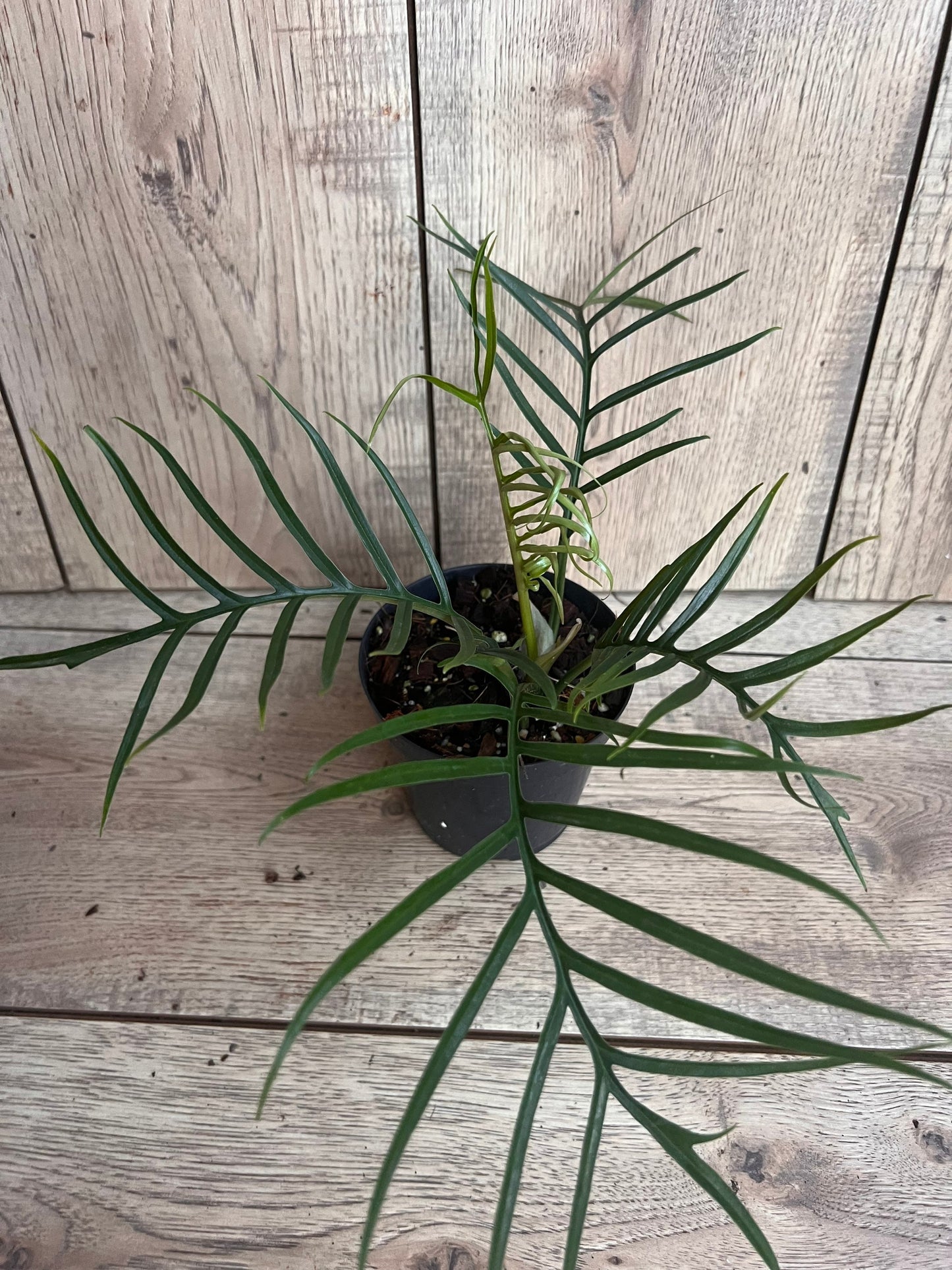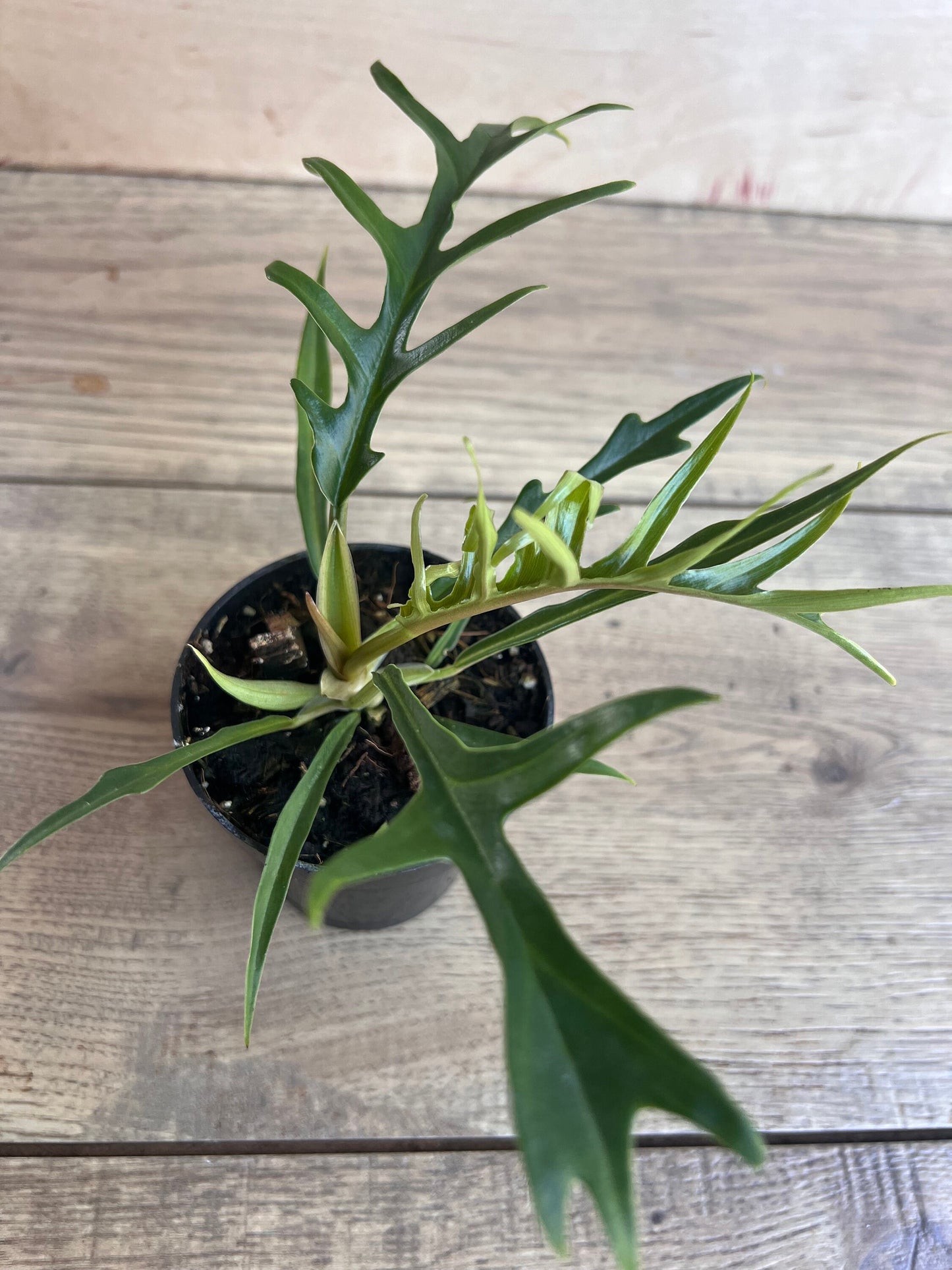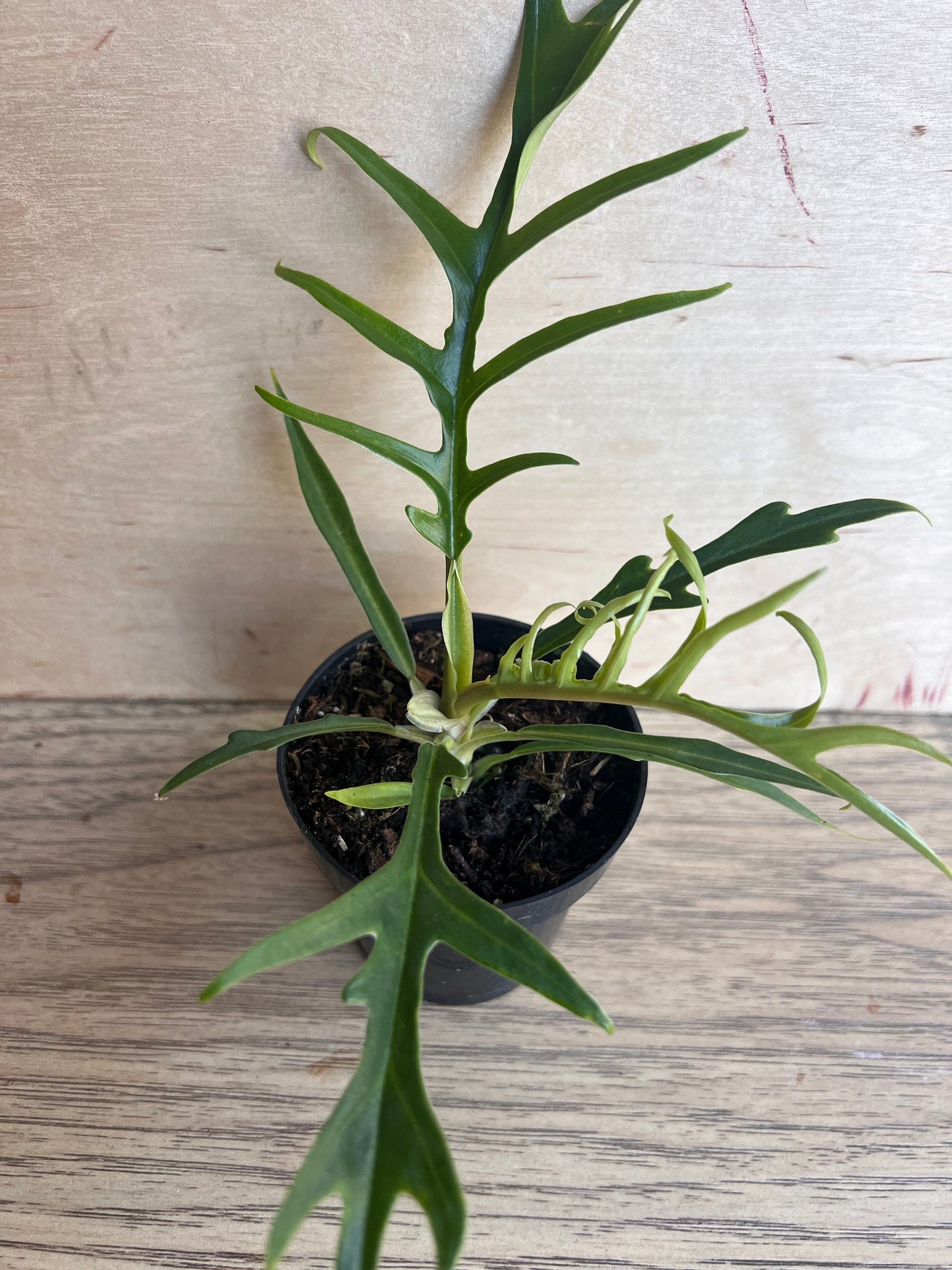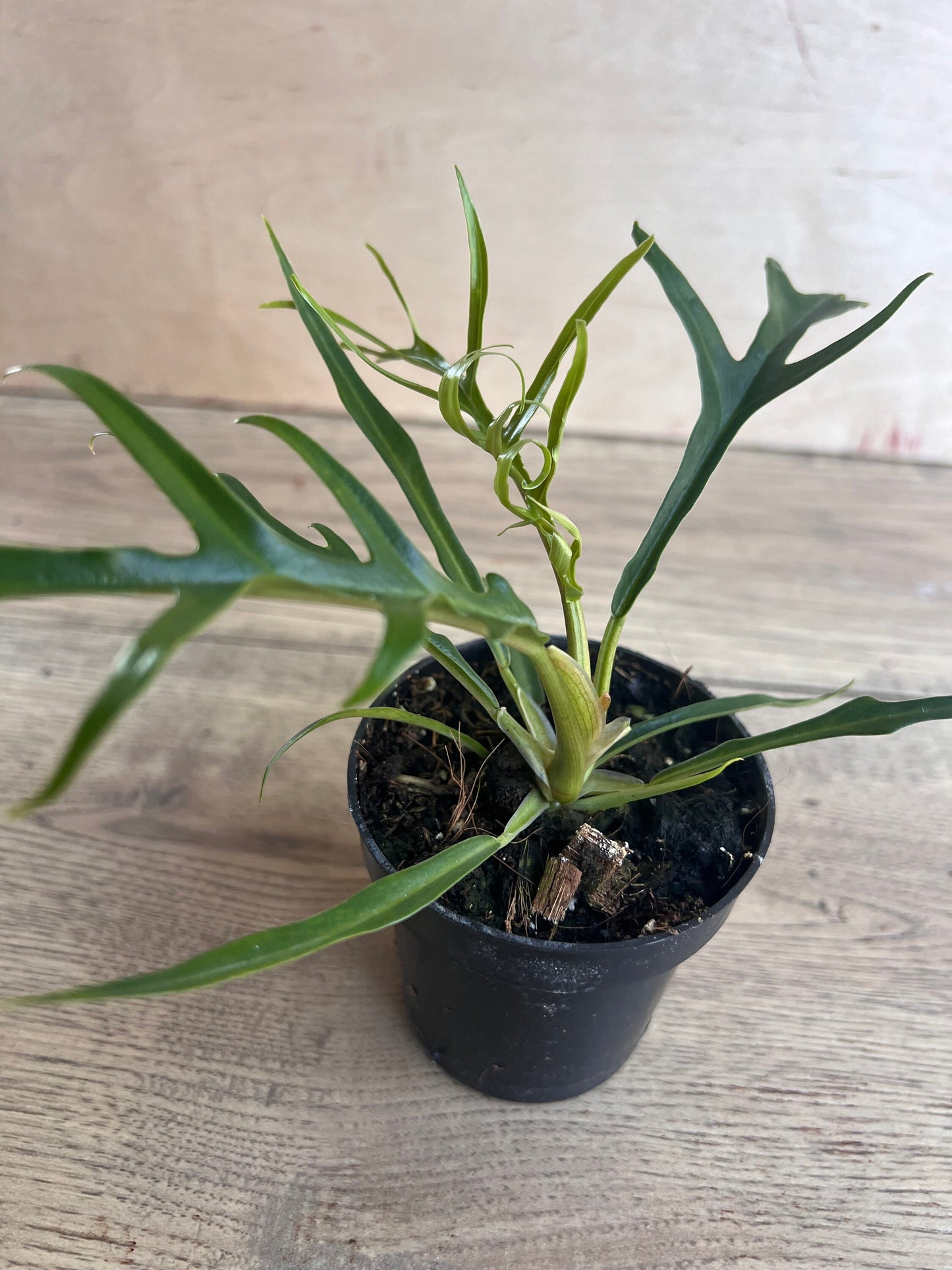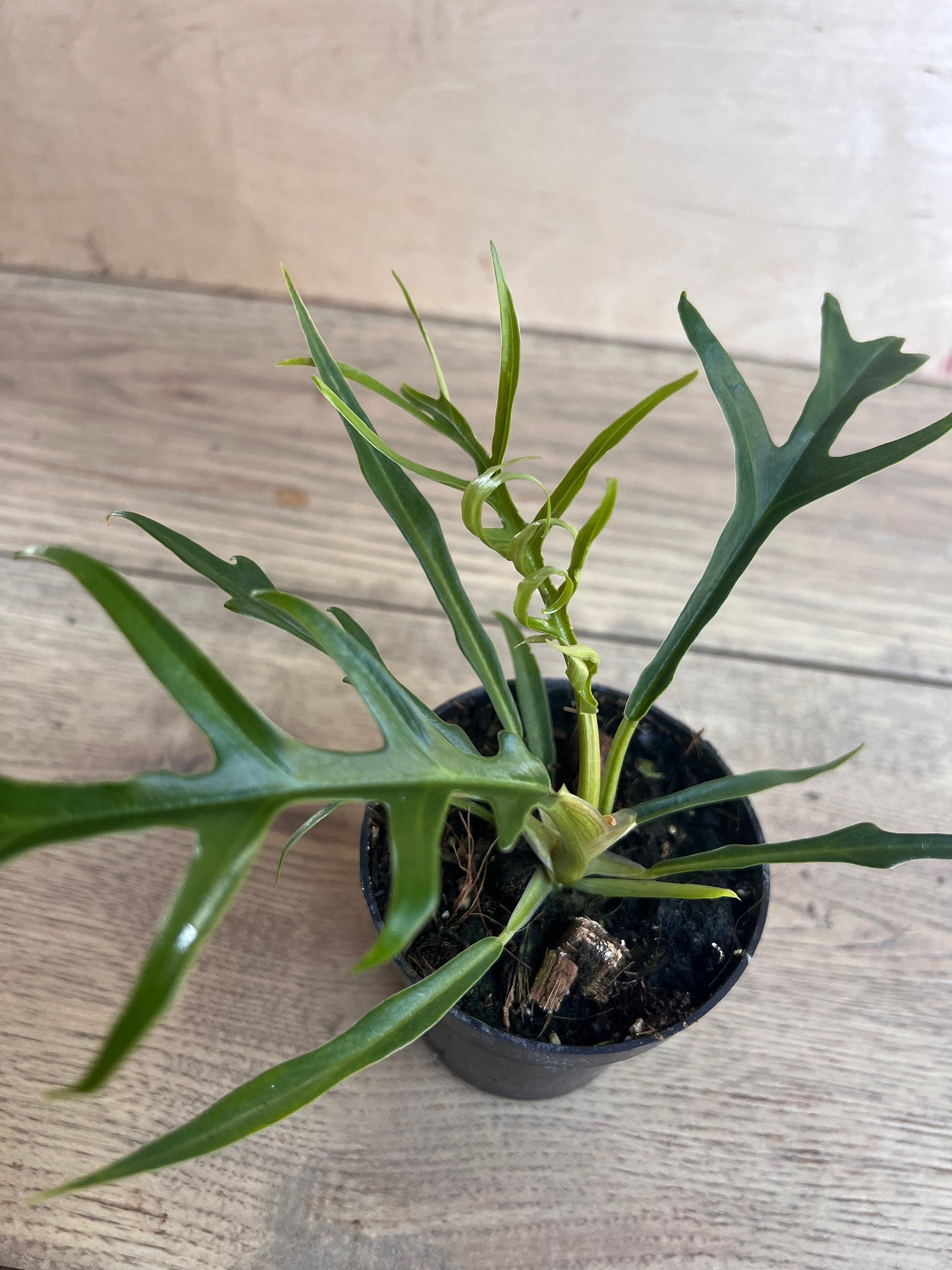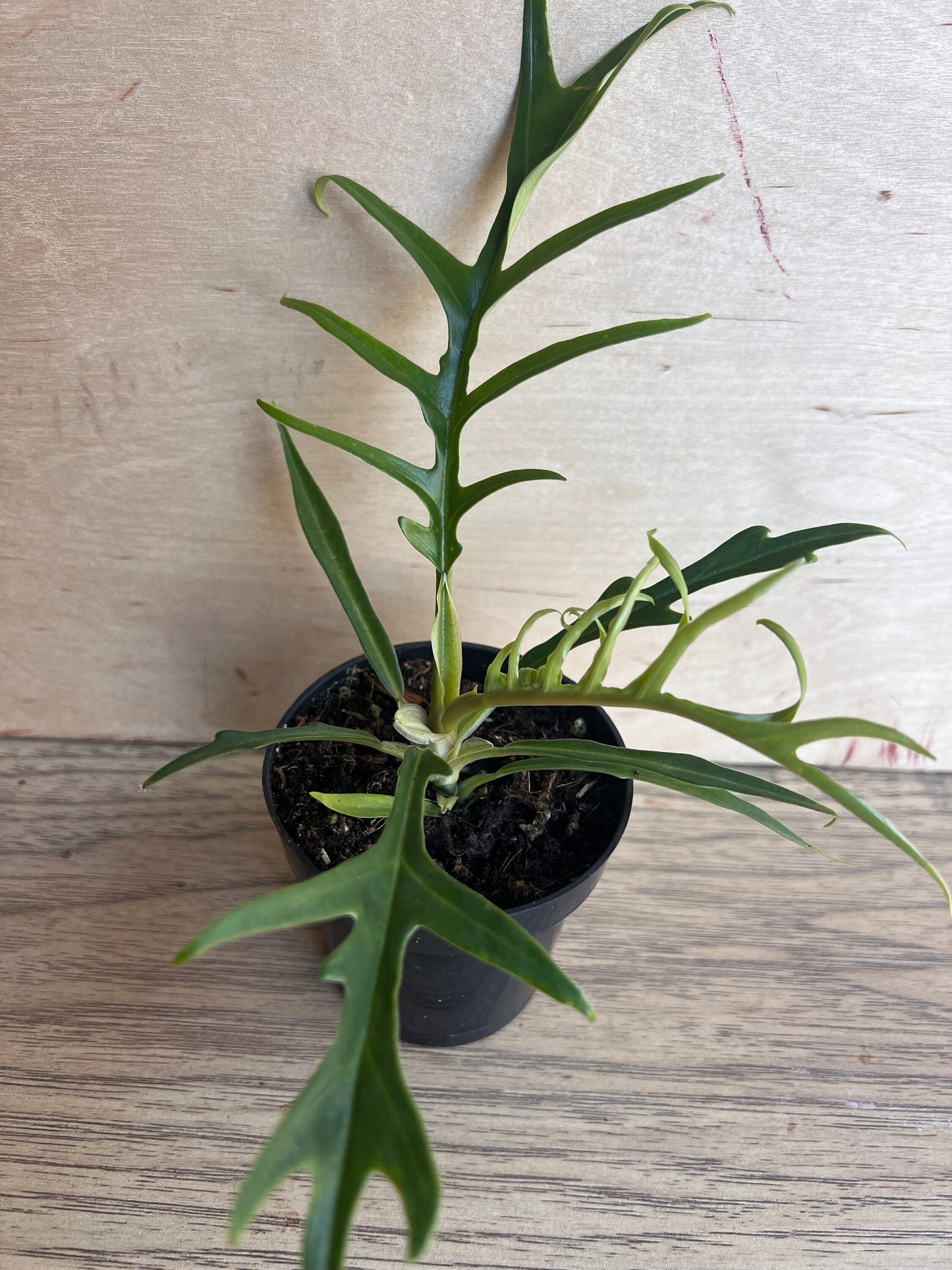Philodendron Tortum in 4" Pot
Philodendron Tortum in 4" Pot
Couldn't load pickup availability
Note: you will receive Philodendron Tortum in 4" pot similar to the pictures
Philodendron tortum is a unique and visually striking species of Philodendron, known for its distinctive, deeply lobed leaves that resemble twisted, jagged edges—hence the name "tortum" (Latin for "twisted"). Native to the tropical rainforests of South America, this plant has a climbing or vining growth habit, making it an excellent candidate for trellises or moss poles. The leaves start off relatively small and smooth but mature into large, elongated, and intricately dissected forms, giving the plant an almost alien-like appearance. The glossy, dark green foliage can add a dramatic, textured look to any indoor plant collection. With its eye-catching leaves and low-maintenance care requirements, Philodendron tortum is a popular choice among plant enthusiasts, particularly for those looking for something unique and sculptural.
-
Light
- Philodendron tortum prefers bright, indirect light to maintain healthy growth and vibrant foliage. In low light, the plant may become leggy and lose some of its sculptural characteristics. Avoid direct sunlight, as it can scorch the delicate leaves, especially during the hotter parts of the day. If grown in lower light, it may still survive but will grow slower and with fewer leaves.
-
Watering
- Water Philodendron tortum when the top 1–2 inches of the soil feel dry to the touch. Like many Philodendrons, it prefers slightly moist soil but doesn't like to sit in water, so make sure the pot has good drainage. Overwatering or waterlogged soil can lead to root rot. In winter, reduce watering frequency, as the plant’s growth slows down, but avoid letting the soil dry out completely.
-
Soil
- A well-draining, airy potting mix is essential for Philodendron tortum. A typical houseplant mix with added perlite, coconut coir, or orchid bark will work well. These additions help ensure the soil has enough aeration and drainage for the roots to thrive. The soil should be slightly acidic to neutral (pH 5.5-7).
-
Temperature
- Philodendron tortum prefers warm temperatures between 65°F and 80°F (18°C and 27°C). It’s best to avoid placing it in areas where temperatures dip below 50°F (10°C), as cold drafts or sudden temperature changes can stress the plant and damage its leaves.
-
Humidity
- Being a tropical plant, Philodendron tortum thrives in high humidity (50% or more). If your home has dry air, particularly in winter, consider using a humidifier, placing the plant on a humidity tray, or regularly misting the leaves. Higher humidity helps maintain the plant’s lush, vibrant foliage and prevents the leaf edges from drying out or curling.
-
Fertilizing
- During the growing season (spring and summer), feed Philodendron tortum with a balanced liquid fertilizer diluted to half strength every 4–6 weeks. This will support its growth and keep the leaves healthy. In the fall and winter, the plant’s growth slows, so you can reduce or stop fertilizing during these months. Over-fertilizing can lead to salt buildup in the soil, so always dilute the fertilizer.
-
Pruning
- Philodendron tortum doesn’t require much pruning unless you want to control its size or shape. You can trim back any leggy stems or remove older, damaged leaves to encourage new growth. If the plant gets too long or unruly, you can also cut back the vines and propagate the cuttings in water or soil. The plant can be trained to climb a moss pole or trellis, which will help it grow more vertically.
-
Repotting
- Philodendron tortum grows relatively quickly, so it may need to be repotted every 1–2 years. Repotting is best done in spring or early summer, when the plant is actively growing. Choose a pot that is 1–2 inches larger than the current one to allow the roots more space to grow. Always use fresh, well-draining soil when repotting.
-
Pests and Diseases
- While Philodendron tortum is not especially prone to pests, it can still be affected by common houseplant issues like mealybugs, spider mites, aphids, and scale. Regularly inspect the undersides of the leaves and stems for any signs of pests, and treat infestations promptly with neem oil, insecticidal soap, or rubbing alcohol.
- Philodendron tortum is also susceptible to root rot if overwatered or kept in poorly draining soil. Ensure the pot has good drainage, and only water when the top of the soil feels dry.
Philodendron tortum is an eye-catching and relatively low-maintenance plant that adds a unique, sculptural quality to any indoor space. By providing it with the right combination of light, water, humidity, and temperature, you'll enjoy its beautiful, jagged leaves and fast-growing vining habit. Whether you let it climb or trail, this tropical beauty will thrive with the proper care
Share
